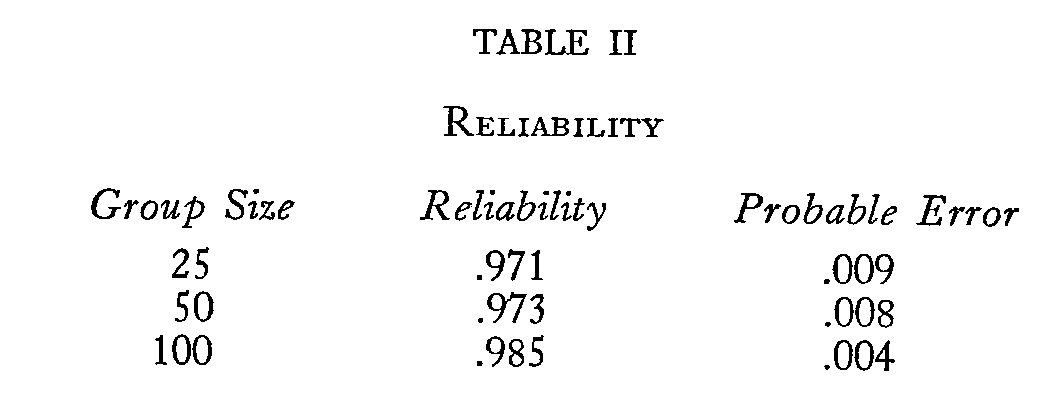Measuring Public Opinion
Emory S. Bogardus
University of Southern California
IN DEVISING a way to measure public opinion it is wise to begin with small definable groups. This study is in reality an attempt to measure group opinion in the belief that the technique in modified form may be applied to large-scale public opinion.
At present we measure public opinion in a democracy through voting. Voting, however, is very simple and is not very enlightening concerning the attitudes of the people. We need a device which will indicate (1) how definitely persons are on the affirmative or negative side of a question, (2) how many are lukewarm on each side, (3) how many have too little information to vote, (4) how many have information but are deadlocked in their attitudes, and (5) what changes in each of the foregoing four particulars occur in the course of a stated time. Can such a device be kept simple enough so that it may be extensively employed?
Voting yes or no is the simplest method of recording group opinion. It is too simple, for it reduces choice to one of only two possibilities. The question may be raised, therefore, can a method of recording group opinion be devised which will give group members opportunity to choose between more than two possibilities and yet which will be practical enough to be of general or public use?
( 466)
To this end an eight-choice scale has been devised. This scale, together with the instructions that accompany it, is as follows :
I
INSTRUCTIONS
Instructions: Do not sign your name. Give yourself entire freedom in marking the questions. Mark each question with one of the following signs:

It is believed that three positive choices (or three negative choices) are as many choices as the ordinary person can discriminate between with any significant degree of skill.[1] Two zero choices are given—one denoting absence of knowledge and the other (indicated by a zero cut in half by a horizontal line) signifying knowledge but with both sides of a question equally strong in the voter's judgment.
For illustrative purposes 10 sample questions are given which have been submitted to a graduate Seminar in Public Opinion numbering 20 persons (Group A), and to 50 members of an undergraduate class in Social Psychology (Group B). These questions were:
( 467)

All plus and minus 3 votes are counted as 3, plus 2 and minus 2 votes as 2, plus 1 and minus 1 as 1, zero votes as 0. All plus votes are added together; likewise all minus votes. The smaller total is subtracted from the larger and divided by the total number of voters. The result is the Group Opinion Quotient and may be either a plus or minus number and may range through 0 from plus 3 to minus 3.
If all the voters are "very positive" on the affirmative side of a question the G.O.Q. would be +3. If all are "very negative," the G.O.Q. would be -3. If no one has any knowledge or if all are deadlocked the G.O.Q. would be 0.
The Group Opinion Quotient is indicative concerning attitudes for it shows something regarding seriousness of feeling. It forecasts action or probable inaction. Votes count most which are most decisive; least, when indecision(due either to each of knowledge, or a deadlocked state of mind) obtains.
( 468)

The reliability of this group opinion measure has been calculated for groups of different sizes by H. Earl Pemberton. Table II gives the results for groups of 25, 50 and 100 persons respectively. The high reliability is partly to be accounted for by the role of remembering.

( 489)
The reliability was calculated in the following manner. The opinion scales were given by Mr. Pemberton twice to student groups, with an interval of two days between the first and the second testing. The G.O.Q. for each question was calculated separately for each testing. The G.O.Q. of identical questions in the first and second tests were correlated. This coefficient was taken as the reliability.
An examination of Table I is enlightening. (1) It not only gives an affirmative or negative vote on each question, but indicates the degree of the affirmative or of the negative answer. The Group Opinion Quotients reflect how strongly a group thinks either for or against a question. (2) Table I shows the questions about which the group is most in doubt. (3) It indicates whether the indecision is due to lack of knowledge or to a deadlock of opinion because both sides of a given question are deemed of equal worth. (4) Table I affords a detailed comparative picture of two groups (in this case A is a graduate group, and B is undergraduate) .